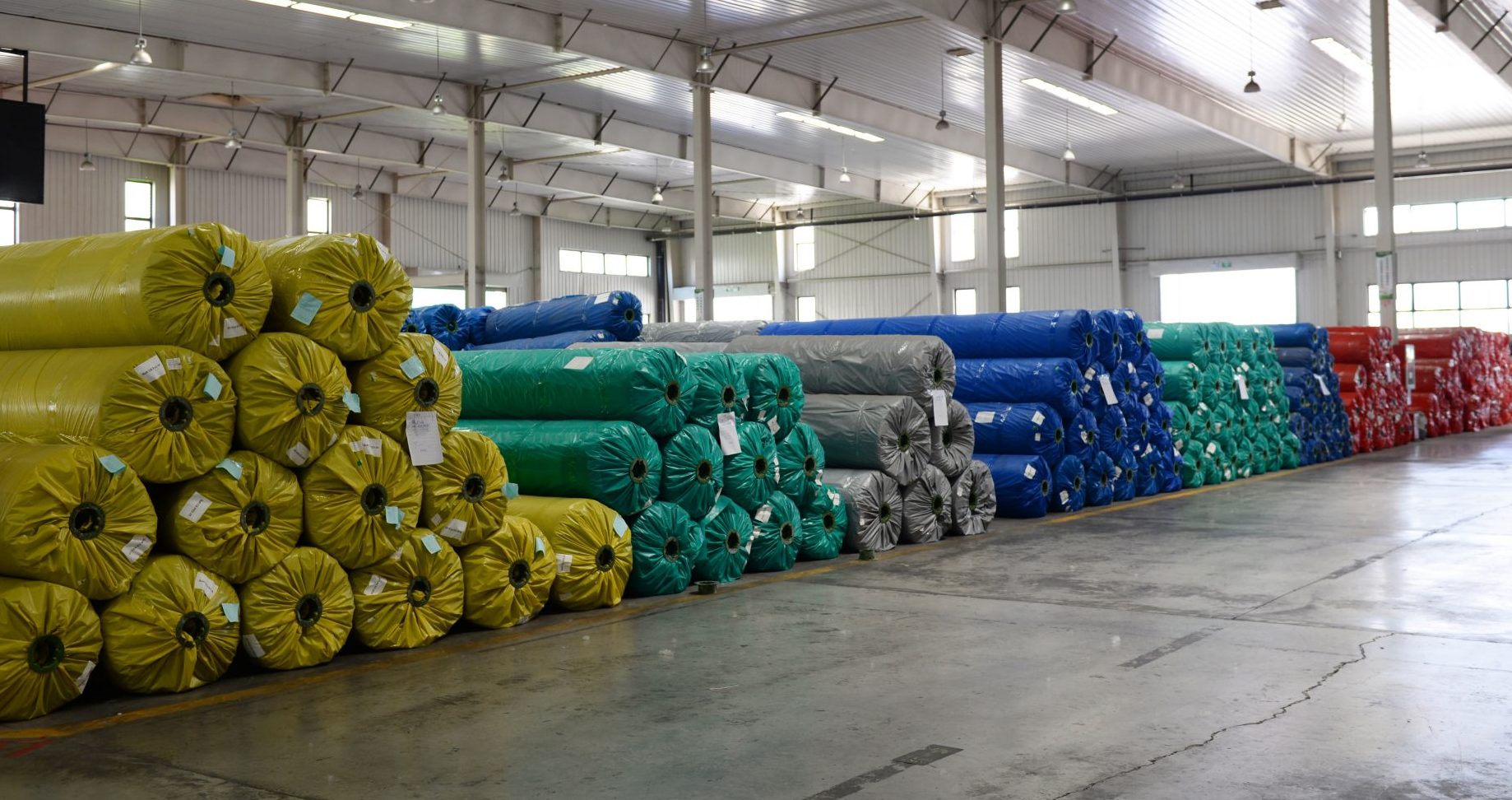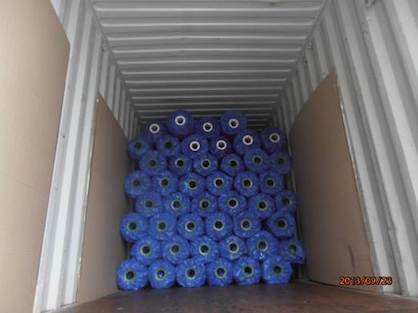A simple guide to producing synthetic grass – Wrapping, packing, shipping and unloading
- 10/07/2020
By Bryn Lee
Having made great synthetic turf, it is important it arrives at its final destination in perfect condition.
Wrapping
Once turf is backed and checked it is rolled up tightly, ready for dispatch. This may sound simple, but if not performed correctly can lead to a variety of problems on site. These range from rolls becoming loose during transport, and subsequently very hard to unroll, or creases forming within the turf. To prevent issues, the roll-up unit pulls the turf tight as it is fed through, before it is cut to the required length.
The rolls are wrapped in plastic covering, secured at each end, to prevent water seeping in when on site. Each roll is numbered and will correspond with a location on the layout plan.
Packing
Rolls are placed into the transport container, by long booms on heavyweight forklift trucks, either onto the floor or on top of other rolls. Large rolls may be stacked 3 high, whereas smaller rolls (less weight) can have more in a stack. To prevent damage the container floor and sides are lined with strong cardboard.
Shipping
Ideally rolls are transported from factory to site, without double handling at any point. The appointed shipping agent will handle dispatch to the destination port, where a local shipping agent will arrange for duties and port costs to be paid by the synthetic turf purchaser, before shipping to site.
Unloading
To unload the rolls from the container a forklift with a long boom is needed. The boom is inserted through the central tube, to the far end, and then the roll is lifted out of the container. Rolls further back in the container are pulled forward, until the boom can lift them cleanly from the container.
Incorrect equipment (short boom), or poor unloading techniques (boom not in far enough) can cause the inner tube to break. This in turn can “pinch” the turf, creating small creases. Care should also be taken to ensure that each roll’s identity sheet is still attached. This helps with ensuring rolls are placed into their correct position, before unrolling.
Before unrolling, each roll should be checked for any visual damage (torn wrapping) and this then reported, before the turf is unrolled.






